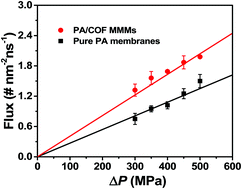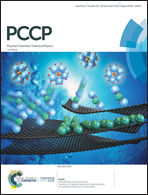Transport mechanism of water molecules passing through polyamide/COF mixed matrix membranes
Abstract
Mixed matrix membranes (MMMs) have gained significant attention due to their high water permeability without the cost of salt rejection. However, the mechanism of water transport through MMMs is still controversial. Herein, a type of two-dimensional covalent organic framework (COF), TpPa-1, was selected as a blending additive for mixing with polyamide (PA) due to its good compatibility with polymeric matrices. We performed nonequilibrium molecular dynamics simulations to investigate the transport properties of the water molecules passing through MMMs. The permeance of MMMs was obviously enhanced compared to that of the pure PA membrane. However, this enhancement in permeance did not originate from the intrinsic pores of COFs. The PA atoms confined in the pores had extremely low diffusivity and thus, the water molecules were trapped inside the COF pores. Outside the COF pores, there was an interfacial region between COFs and PA, in which the water molecules aggregated to form a high-density region. In this region, the average flow velocities of the water molecules were much higher than those in pure PA or PA outside the mixed region of MMMs. The water transport mechanism discovered in this work offers an alternative and more likely explanation for the high permeance observed in PA/COF MMMs, and this understanding can be helpful to design more efficient MMMs.



 Please wait while we load your content...
Please wait while we load your content...